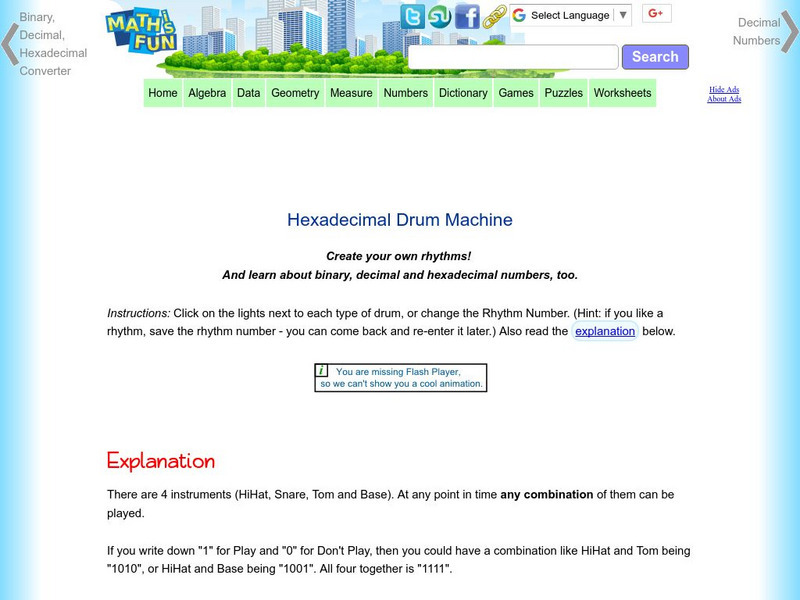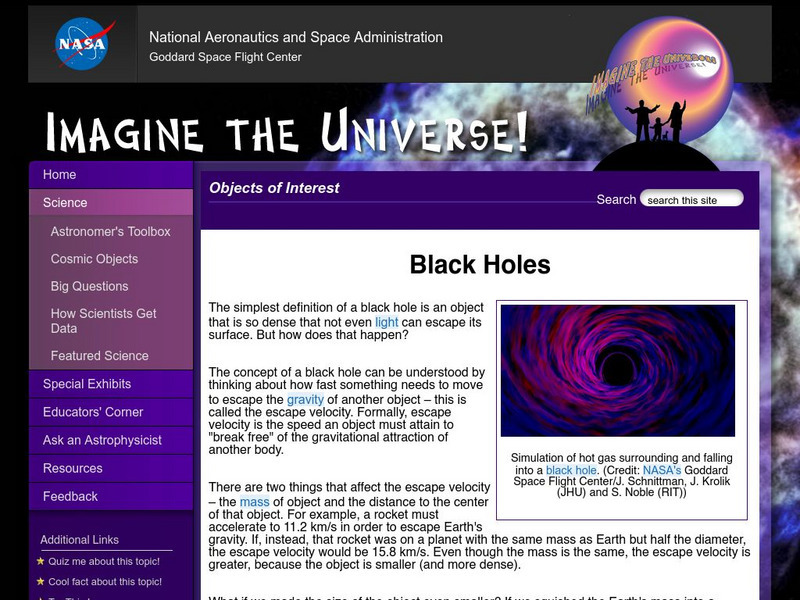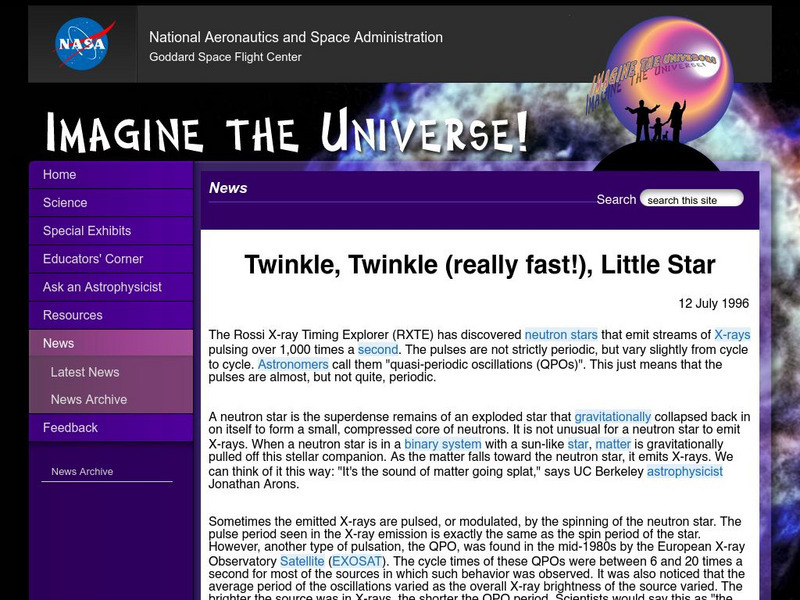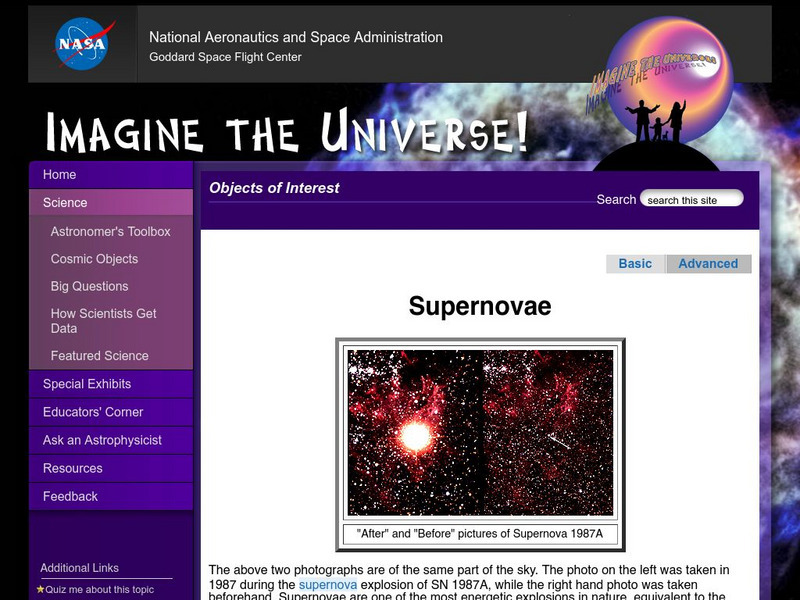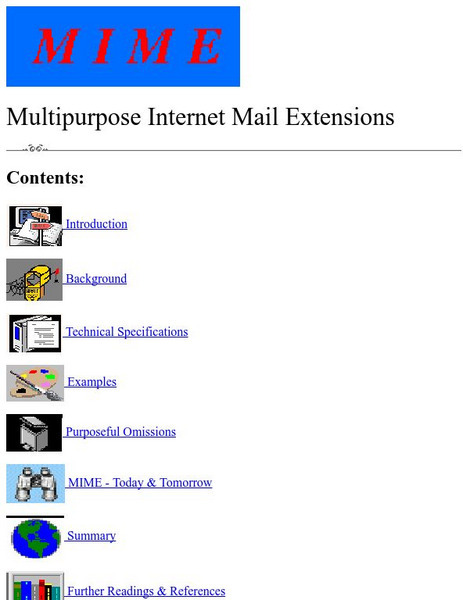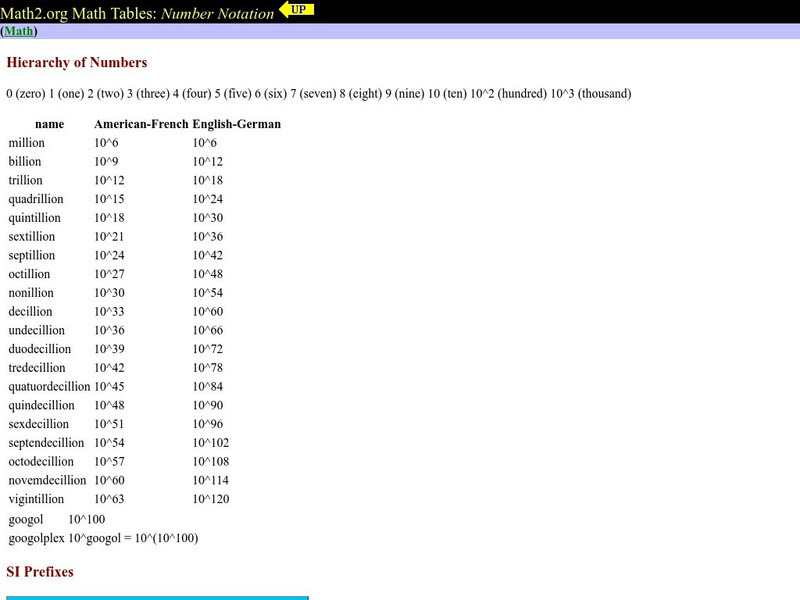Math Is Fun
Math Is Fun: Hexadecimal Drum Machine
Create rhythms on this 4-instrument hexadecimal drum machine and see what your rhythms look like in the binary, decimal, and hexadecimal number systems.
Texas Instruments
Texas Instruments: Numb3 Rs of the I Ching
This activity was developed to be used in conjunction with the NUMB3RS episode "Undercurrent," in which a victim is found with a Chinese hexagram tattoo. Students will learn about trigrams and hexagrams, Chinese characters made from...
NASA
Nasa: Imagine the Universe: Black Holes
Learn what black holes are and the myths that surround them.
Science Struck
Science Struck: How to Convert Octal to Decimal
Explains what the four different types of number systems are and what they are used for. Presents the formula used to convert octal numbers into decimals and models how to apply it in two example problems.
Cornell University
Cornell University: Astronomy: Orbital Motion and Kepler's Laws
At this site from the Astronomy Department of Cornell University, Kepler's three laws of planetary motion are stated. There are brief explanations of each, along with links to additional information on related subjects.
NASA
Nasa: Imagine the Universe: "Twinkle, Twinkle (Really Fast!), Little Star"
"The Rossi X-ray Timing Explorer has discovered neutron stars that emit streams of X-rays pulsing over 1,000 times a second." Visit this site to read the rest of this article. Site offers additional resources as well as a Teacher's Corner.
PBS
Pbs Learning Media: Birth of a Supernova, Type Ia
In this interactive activity from NOVA Online, learn about a type of exploding star - a Type Ia supernova - that is so bright that astronomers can measure the distance to the galaxy in which it resides, and even learn which elements make...
NASA
Nasa: Imagine the Universe: Supernovae (Advanced)
Supernovae are divided into two basic physical types, including a description of supernova types and how they are classified based on the existence of hydrogen spectral lines. Definitions of key terms are provided.
Other
Fernbank: Naming Chemical Compounds
Learn how to name chemical compounds. Scientist world over use a standard method for naming chemical compounds based on an international standard that makes working with chemicals not only precise but safe as well. Includes quiz.
Massachusetts Institute of Technology
Mit: Open Course Ware: Exploring Black Holes: General Relativity and Astrophysics
College-level physics course focusing on black holes. Course topics include general relativity, astrophysics, and elements of cosmology . Course features include selected video lectures, lecture notes, assignments, and exams.
Other
Tel Aviv University: Mime
This technical article explains MIME (Multipurpose Internet Mail Extensions). MIME is a specification for enhancing the capabilities of standard Internet electronic mail. It offers a simple standardized way to represent and encode a wide...
NASA
Nasa: Imagine the Universe: Welcome to the World of X Ray Astronomy
Site recounts how X-rays were discovered as well as who discovered them. Offers graphics, links to facts on this topic, a quiz, and teacher resources.
Math2
Math2.org: Number Notation
At this website from Math2.org you will find tables with information about number words, meanings, and the symbols used to express them. At the very bottom there is also a Java Base Conversion Calculator.
History of Computing Science
History of Computing Science: Edvac
EDVAC (Electronic Discrete Variable Automatic Computer) was an early computer that was one of the first to use the binary number system to represent information. This lecture is a brief presentation of the EDVAC.
Curated OER
Cornell University: Orbital Motion and Kepler's Laws
At this site from Cornell University, Kepler's three laws of planetary motion are stated. There are brief explanations of each. The laws are applied to explain the features of planetary orbits as well as the motion of binary star...
